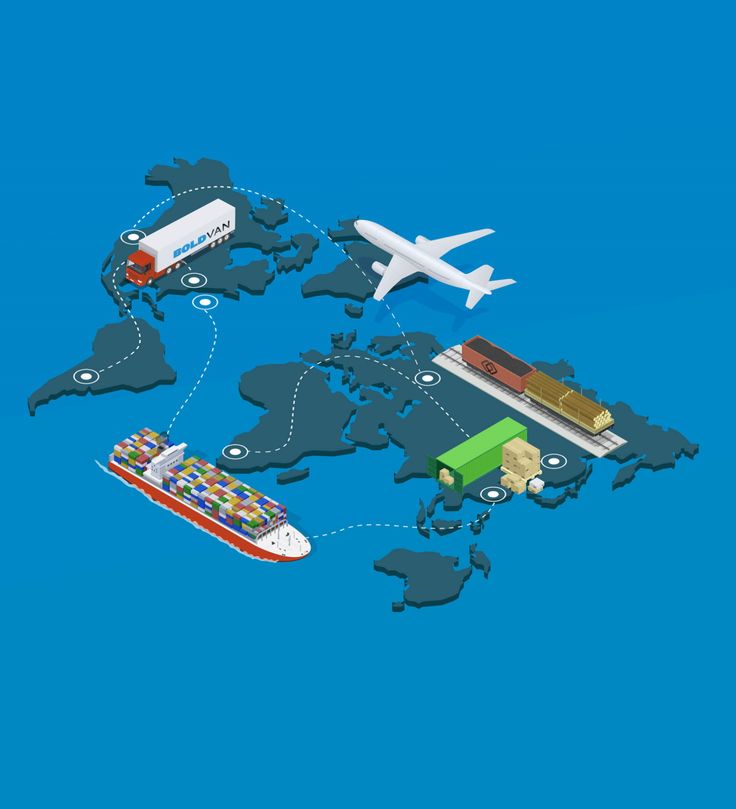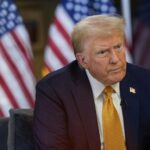Global Trade and Economic Policy in 2025: Navigating a Complex Landscape
In 2025, global trade and economic policy are at a crossroads, shaped by the intertwined forces of globalization, technological advancements, geopolitical tensions, and sustainability challenges. The global economy is more interconnected than ever, with trade flows spanning across regions, industries, and digital platforms. However, rising nationalism, protectionist policies, and the ongoing shift toward digital and green economies are significantly influencing trade dynamics and shaping the future of international economic relations.
This article delves into the current state of global trade, the economic policies that are reshaping international markets, and the challenges and opportunities that lie ahead for policymakers, businesses, and consumers in 2025.
1. The Current State of Global Trade in 2025; Global Trade and Economic Policy
Post-Pandemic Recovery: Global Trade and Economic Policy
The global economy is still recovering from the profound impacts of the COVID-19 pandemic, which disrupted supply chains, trade routes, and labor markets. In 2025, many countries are focused on rebuilding their economies and strengthening resilience to future global shocks. This recovery has been uneven, with developed nations generally rebounding faster than developing countries, particularly in areas like manufacturing, technology, and services.
Global trade has rebounded to pre-pandemic levels in many sectors, but it remains marked by shifting patterns. Industries like technology, healthcare, and green energy are thriving, while sectors such as travel and hospitality continue to struggle. The pandemic has underscored the vulnerability of global supply chains, prompting countries and companies to rethink their reliance on just-in-time models and seek more resilient, diversified trade networks.
Regional Trade Blocs and Agreements: Global Trade and Economic Policy
Regional trade agreements and economic partnerships are gaining prominence as countries seek to strengthen ties within specific regions. The Regional Comprehensive Economic Partnership (RCEP) in Asia, which brings together China, Japan, South Korea, and several Southeast Asian countries, has become one of the world’s largest free-trade areas. It is expected to drive regional trade flows and deepen economic cooperation within the Asia-Pacific region.
Similarly, the European Union continues to play a key role in shaping global trade policies, with an emphasis on maintaining its single market and trade agreements with countries outside the EU. In the United States, the USMCA (formerly NAFTA) remains an important trade agreement, which has reshaped North American trade dynamics, focusing on digital trade, labor rights, and environmental regulations.
At the same time, the African Continental Free Trade Area (AfCFTA), which aims to create a single continental market, has gained traction as a driver of economic integration within Africa. This agreement is seen as a potential game-changer for Africa’s economic growth and global trade position.
Shifts in Global Trade Routes: Global Trade and Economic Policy
The COVID-19 pandemic also accelerated the digitalization of trade, especially in e-commerce, digital services, and cross-border data flows. By 2025, the movement of goods through traditional shipping channels is still critical, but digital trade and the flow of information and services are becoming increasingly important.
Furthermore, ongoing geopolitical tensions, especially between the U.S. and China, and the global emphasis on supply chain security have prompted a reevaluation of trade routes. Countries are investing in reshoring and nearshoring strategies to mitigate risks associated with over-reliance on distant or politically unstable regions for critical goods.
2. Economic Policy Trends in 2025; Global Trade and Economic Policy
Protectionism and Nationalism: Global Trade and Economic Policy
In 2025, the rise of populism and nationalism continues to influence global economic policy, particularly in relation to trade. In many countries, leaders have adopted protectionist policies aimed at shielding domestic industries from foreign competition, particularly in manufacturing, agriculture, and digital technologies.
The U.S. under the leadership of populist and nationalist figures has seen continued efforts to promote an America First trade agenda, with a focus on reducing trade deficits, implementing tariffs, and challenging international trade agreements that are seen as unfavorable to U.S. interests. China has similarly adopted policies aimed at boosting its domestic economy and reducing dependence on foreign imports, while the European Union has taken a tougher stance on trade practices such as dumping, subsidies, and intellectual property theft.
This shift toward protectionism is a reaction to growing concerns about the impact of globalization on jobs, wages, and national security. Countries are increasingly focused on ensuring that global trade serves the interests of their own populations, even at the risk of raising trade barriers and reducing international cooperation.
Trade Liberalization and Digital Trade: Global Trade and Economic Policy
Despite the rise of protectionism, there is also a push toward trade liberalization in certain sectors, particularly digital and green trade. Digital trade, which involves cross-border transactions in digital goods, services, and data, is one of the fastest-growing areas of global trade. In 2025, governments are working to strike a balance between regulating data flows to protect privacy and fostering an open digital economy.
Countries are increasingly negotiating digital trade agreements that provide frameworks for the cross-border flow of data, e-commerce, and digital services. For instance, Japan, Singapore, and Australia have been at the forefront of promoting open digital trade, while the EU is implementing stringent regulations on data privacy (such as GDPR) that impact global businesses operating within the region.
Similarly, green trade is gaining momentum as countries and industries pivot toward sustainability. Global agreements on environmental standards and the trade of clean energy technologies, carbon credits, and sustainable goods are becoming central to economic policy discussions. The World Trade Organization (WTO) is working on new frameworks to address environmental concerns, trade in clean technologies, and carbon emissions regulations.
Geopolitical Tensions and Trade Conflicts: Global Trade and Economic Policy
Geopolitical tensions are a major factor influencing economic policy in 2025. The U.S.-China trade war, which began in 2018, continues to have ripple effects on global trade dynamics, with both countries imposing tariffs on each other’s goods and engaging in technological rivalry. The trade dispute has led to a shift in global supply chains, with companies looking to diversify their manufacturing bases outside of China and seek new markets for their products.
In response to rising tensions with China, the U.S. and its allies are also focusing on decoupling from Chinese technology, particularly in areas like 5G networks, artificial intelligence, and semiconductors. This has prompted a reconfiguration of international supply chains, with countries like India, Vietnam, and Mexico emerging as alternative manufacturing hubs.
Additionally, trade conflicts related to Brexit continue to evolve in Europe, with the UK negotiating its own trade agreements while navigating its separation from the European Union. Trade agreements with countries like the U.S., Australia, and Japan are central to the UK’s post-Brexit trade strategy, but tensions over Northern Ireland and the future relationship with the EU remain unresolved.
3. The Role of Global Institutions in Trade and Economic Policy; Global Trade and Economic Policy
World Trade Organization (WTO): Global Trade and Economic Policy
The WTO continues to play a crucial role in shaping global trade rules and resolving disputes between nations. However, the WTO faces challenges in adapting to the new realities of global trade, particularly the rise of digital trade, the growing influence of state-owned enterprises, and the resurgence of protectionism. In 2025, the WTO is pushing for reforms to enhance its dispute resolution mechanisms and bring greater transparency to global trade rules.
International Monetary Fund (IMF) and World Bank: Global Trade and Economic Policy
The IMF and the World Bank remain key players in global economic governance. The IMF’s role in providing financial support to struggling economies and advising on monetary policy is crucial, especially for countries facing debt crises or economic instability. Similarly, the World Bank is working to promote development in lower-income countries and foster investment in infrastructure, health, and education.
In 2025, these institutions are focused on promoting sustainable development and addressing the economic impacts of climate change. Both organizations are increasingly involved in financing green projects, promoting clean energy transitions, and supporting countries as they adapt to environmental challenges.
4. Challenges and Opportunities for Global Trade and Economic Policy
Climate Change and Sustainability: Global Trade and Economic Policy
Climate change presents a major challenge to global trade, with extreme weather events, rising sea levels, and disruptions to agricultural production threatening supply chains. Countries are focusing on integrating sustainability into trade policies by promoting the use of clean technologies, reducing carbon emissions, and fostering green energy trade.
Trade in carbon credits, renewable energy technologies, and eco-friendly goods is expected to increase significantly, presenting new economic opportunities. However, countries must also navigate the complexities of carbon tariffs and environmental regulations to ensure that they comply with global climate commitments.
Technological Disruption and the Digital Economy: Global Trade and Economic Policy
The digital transformation is reshaping global trade, particularly in sectors like e-commerce, fintech, and digital services. Governments are grappling with how to regulate and tax digital goods and services while ensuring fair competition and data protection. The rise of digital currencies, blockchain technology, and artificial intelligence will continue to transform the landscape of international trade, creating both opportunities and challenges for businesses and policymakers.
Economic Inequality and Development: Global Trade and Economic Policy
Economic inequality remains a significant challenge in global trade. Many developing countries continue to struggle with debt, poverty, and access to markets, while advanced economies benefit from globalization. In 2025, there is a growing recognition of the need for more inclusive trade policies that address the needs of low-income and developing countries. Trade agreements must evolve to promote equitable development, ensuring that the benefits of global trade are more widely shared.
Conclusion: The Path Forward for Global Trade and Economic Policy
As we move further into 2025, global trade and economic policy will continue to evolve in response to shifting geopolitical dynamics, technological advancements, and environmental challenges. Policymakers must balance the need for protectionism with the imperative for global cooperation, fostering trade policies that promote sustainable growth, economic equality, and resilience in the face of emerging global risks.
By adapting to the demands of the digital economy, prioritizing sustainability, and promoting inclusive growth, countries can navigate the complex landscape of global trade and economic policy and unlock new opportunities for prosperity in the 21st century.










